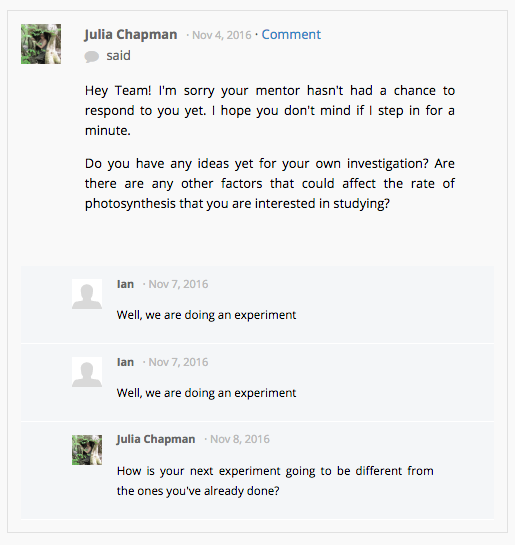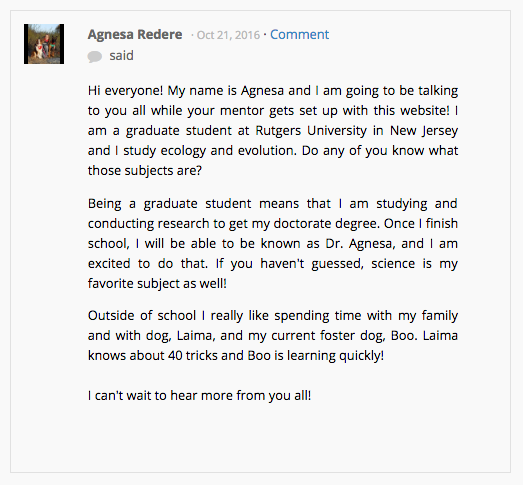What IS a PlantingScience 'Liaison'?
In short, a PlantingScience Liaison is a member of the Master Plant Science Team that works closely with one of our participating PlantingScience teachers. The liaison assists the teacher with technical aspects of the program, as well as such logistics as finding and inviting mentors to classroom groups. Serving as a liaison usually takes a little longer each week - 2 hours/week, compared to the 1 hour/week that mentors typically volunteer.
We pair each teacher with one or two MPST liaisons, depending on their team numbers. The liaison role is intended to help facilitate communication between the teacher and mentors. Often, mentors feel like the classroom environment of their teams is a 'black box"…they have no idea what is going on between the times their teams post to them. Teachers can sometimes be confused about who to go to for advice when they are matched with many mentors.
The liaison role is intended to help bridge the communication gap. Liaisons are assigned as the primary mentor for one of a teacher's teams. Liaisons will get communications from their team and are expected to respond to that team to mentor them. In addition to mentoring this team, the liaison should monitor other teams' activity at least twice a week to identify and respond to issues described in the MPST decision tree. As liaison, if you see a problem develop or confusion from either the teacher or a mentor, you can take steps to clarify things.
Being a liaison helps you as a mentor, because you are more aware of what is going on in the whole class, and how your team relates to the whole. You will see a wide range of mentoring styles, and comments from another team's mentor might make you think of a good post or point to bring up with your own team. It is a great way to see mentoring in action, and what works and doesn't work in a particular situation, which can help you reflect on your own mentoring and communication style.
The most common problem you'll be asked to help solve is to step in to give a team feedback when the team's mentor has not been online in a while. That happens frequently and (on the mentor end) can be caused by anything from the automatic PlantingScience messages going to spam, to an unplanned trip, to an illness, to a suddenly very busy week.
When you step in for a missing mentor and post on a team's project page, try to be obvious that you are not the group's assigned mentor. Preface your comment with something like "Just stopping by to give you some feedback until [mentor name] can come back online" or end with "[mentor name], feel free jump in with more suggestions." That keeps the door open if the mentor would like to take the team in a different direction, and encourages the mentors to quickly get back to the team, which helps the relationship between the team and the assigned mentor.
A couple of examples:


Note: You have the option to be matched as a mentor with two teams this session. When you and your teacher partner are finding mentors to match with projects, please be sure to keep one of those projects go along with your liaison assignment. Your only role to the other class and teacher is to be the mentor to your matched team. Once you have been invited to mentor a team outside of your teacher partner’s classroom, please change your availability status in your profile to ‘Unavailable.’ This will prevent you from receiving more invitations.